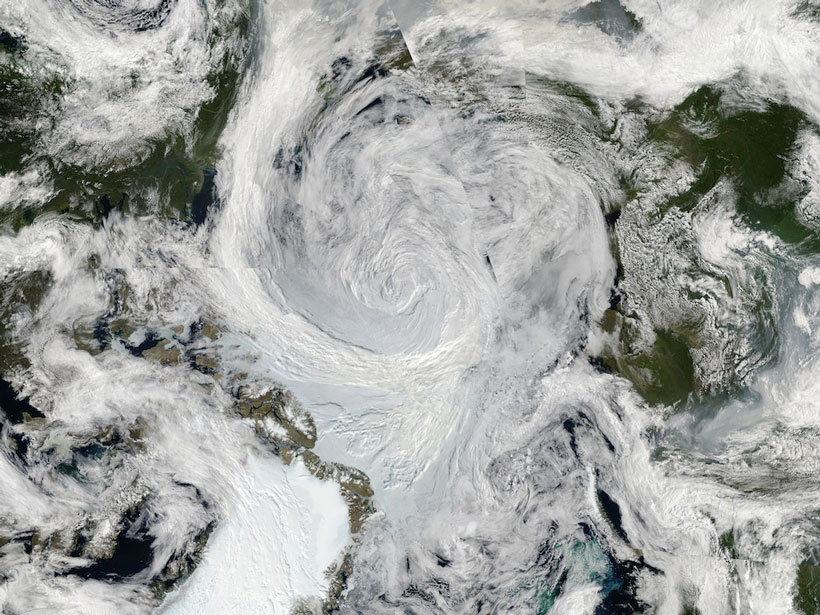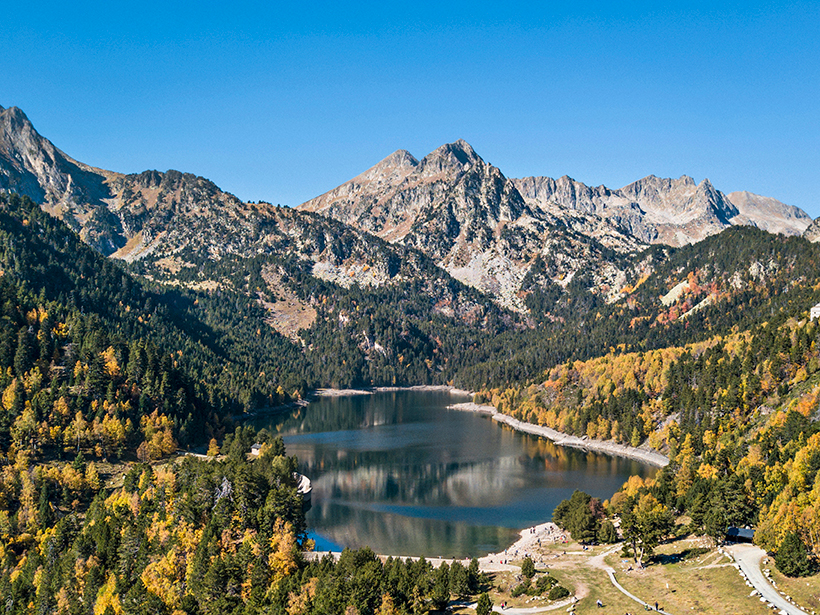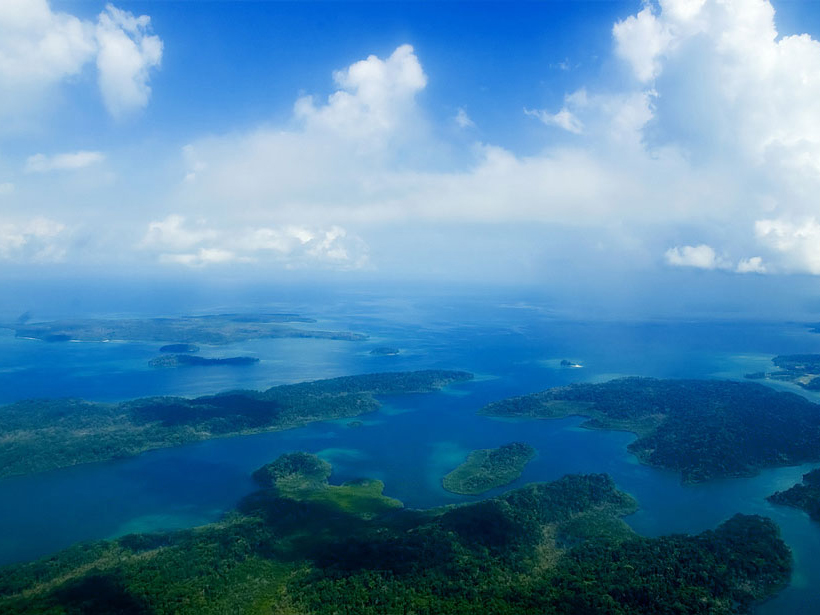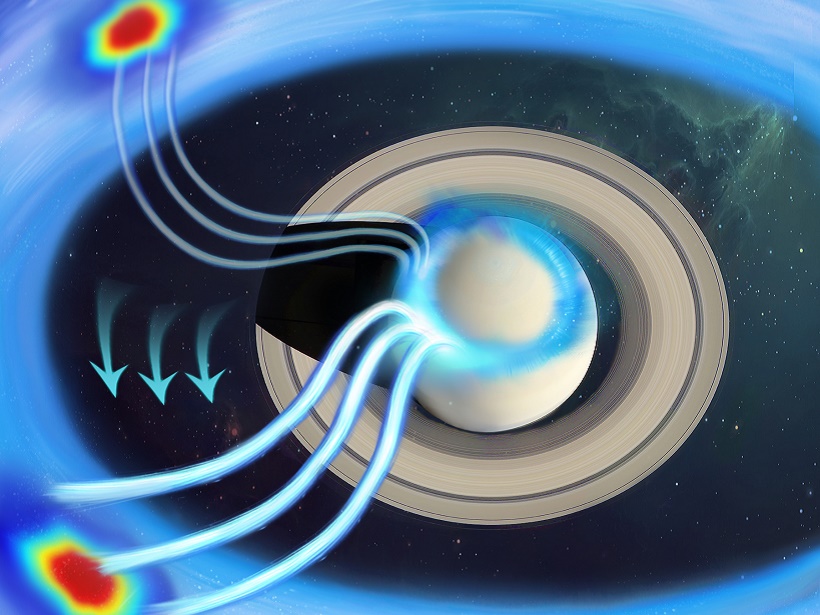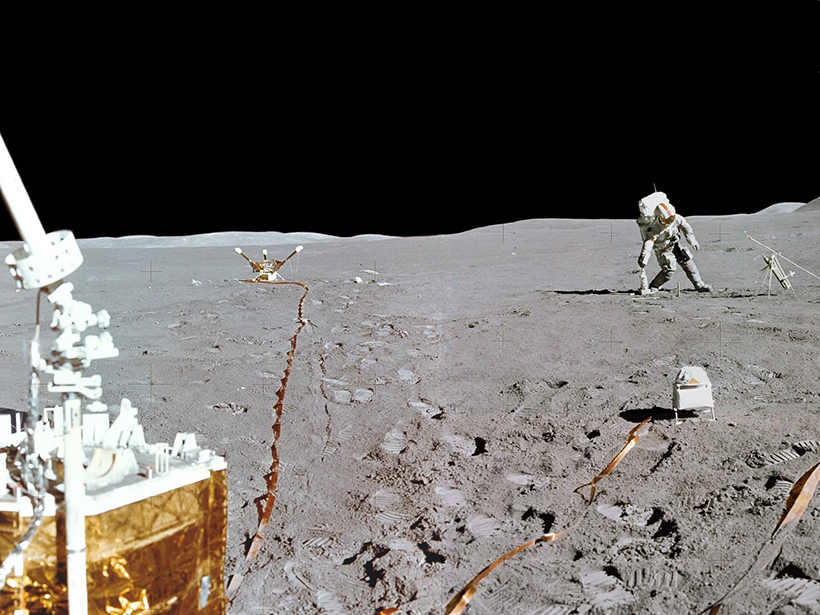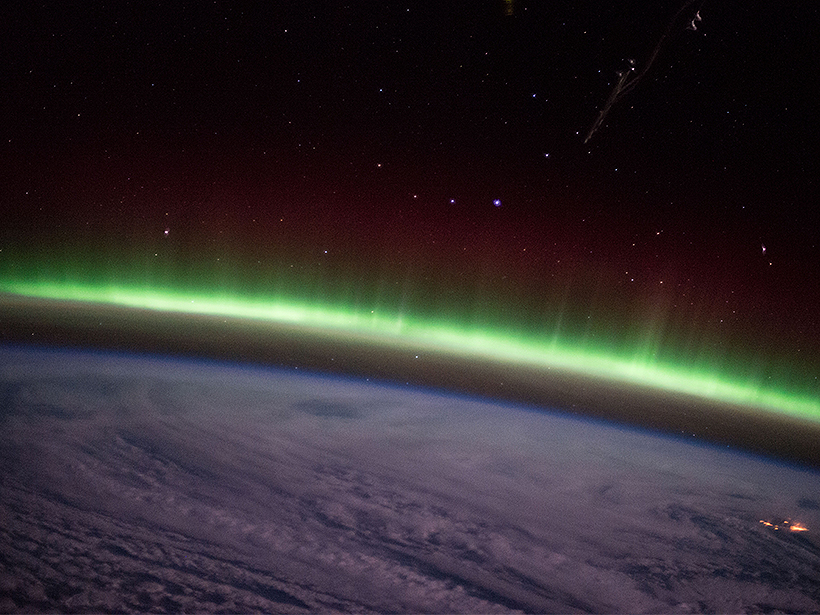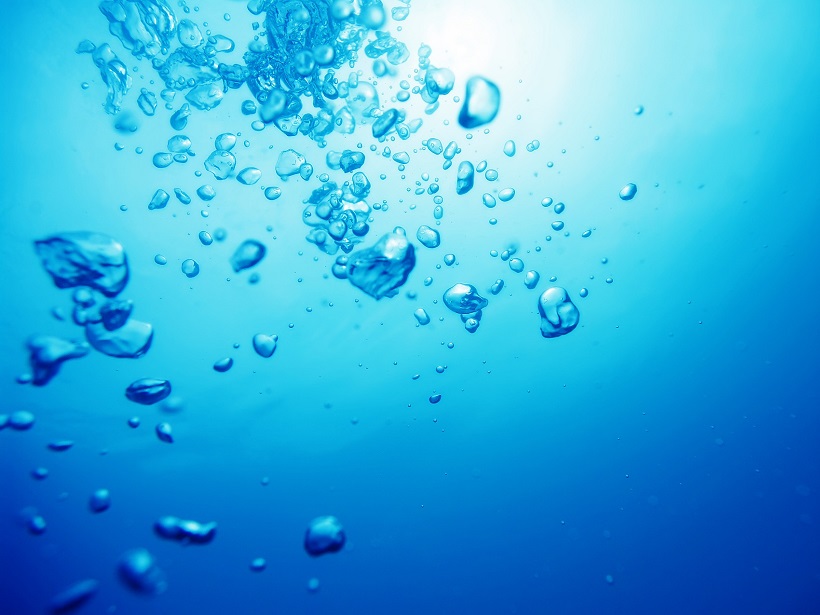Whirlwinds disrupt the sea ice in the Arctic Ocean. Scientists are now beginning to understand how.
unsolved mysteries
Microbes Rain Down from Above, to the Tune of the Seasons
Every time snow or rain falls, it brings with it microbes from high in the atmosphere. Could those microbes have a seasonal signal, just like the plants on the land below?
Investigating the Northern Indian Ocean’s Puzzling Geodynamics
International Ocean Discovery Program (IODP) Proposal Nurturing Workshop on Indian Ocean; Goa, India, 17–18 September 2018
Cassini Reveals a Missing Link on Saturn’s Rotating Aurora
The bright aurorae dancing in the sky are produced by charged particles traveling along the magnetic field lines from tens of planetary radii. By why do aurorae rotate at Saturn but not at Earth?
What Makes a Terrestrial Gamma-Ray Flash in Thunderclouds?
Two lightning flashes were observed in the same location: One produced a bright gamma-ray flash with about 1000 counts per millisecond, but the other did not.
Exploring the Unknown of the Ross Sea in Sea Ice–Free Conditions
A team of polar scientists aboard the OGS Explora, cruising in rare ice-free conditions, discovered new evidence of ancient and modern-day ice sheet sensitivity to climatic fluctuations.
The Case of the Missing Lunar Heat Flow Data Is Finally Solved
Decades-old data analyzed for the first time suggest that astronauts’ disturbance of the Moon surface increased solar heat intake, warming the ground below.
Mysterious Aurora Borealis Feature Explained for the First Time
High-speed particles cause indentations in the magnetopause to form “throat auroras.”
Fresh Take on a Gold Treasure’s Origins Using Geochemistry
Blending geoscience and archaeology, researchers apply a new technique to pinpoint where ancient and unique gold artifacts were crafted.
Multiple Choices Exist for Changing Ocean Oxygen Concentrations
Widespread declines in ocean oxygen concentrations are now being reported with authors offering quite different explanations. Which ones are correct?

